Tax incentives

Ireland offers some of the most generous forms of tax relief and incentives for the investor from the creative industries and the financial sector to the construction industry in and outside Ireland ’s cities. However as in other businesses where tax relief is used to encourage spending across particular markets there are problems.
Recent allegations that a single leaf timber frame development in Leitrim was forced to incorporate an outer layer of blockwork in spite of no such requirement in the Building Regulations or by the local authority in question suggests that something is seriously amiss, as Frank Coles explains.
In the construction sector we have Section 23 and the Rural Renewal Scheme that while providing incentives for construction and renovation outside of Dublin are also creating problems, by potentially over-inflating the housing market and forcing the use of energy inefficient and outdated technologies.
In brief, Section 23 provides tax relief for the capital expenditure incurred on construction costs. So for example if a property costs €200,000 in total and has qualifying construction costs of 90%, the tax on this €180,000 total can be written off against all of the investor’s other Irish rental income in the first year, with any unused relief being carried forward indefinitely.
In addition the Rural Renewal Scheme that includes Section 23 also allows the new owner of a rental property in an approved rural area to offset the interest payable on any borrowed money against any rental income from the property.
These allowances are calculated by referring to the price paid to the property developer and may be encouraging overpricing in rural housing. This higher pricing creates a situation where profits are made on the value of the property and in the tax relief granted.
Conor McManus, Manager of timber frame builders GreenTek explains that “ here in Leitrim, everybody who wants to build a house, they want to get the section 23 on it.” Because of this it is common practice for properties and developments to be advertised as having Section 23 or Rural Renewal compliance, even when this factor is unknown. The reason is “your standard house is only worth about €100-120,000 but you can command €180-190,000 if the section 23 is on it.”

This situation is having a negative impact for builders such as McManus who use building techniques that, at present, the Department of the Environment inspectors are refusing to acknowledge. On one particular development in Leitrim McManus constructed six out of 23 houses fabricating the timber frames on-site and creating a single skin cladding for the exterior. It was at this point that the Department of the Environment came out to inspect the dwellings that had previously been certified by an engineer for compliance with the Building Regulations and were also covered by Premier Guarantee Insurance. The DoE refused to sanction the buildings under Section 23 because they were constructed on site with a single-skin. McManus says that the DoE representative then “demanded that a block skin be built in front, […] encouraging block building, which doesn't make sense.” As a consequence the developer is continuing the project with the remaining houses to be built with a block skin.

It is this contradiction that Greentek is particularly unhappy with. “The building regulations don’t specify what a wall should be, except to say that it should be structurally sound, it should meet the U-Values, and it should be fireproof. Now my wall meets all those criteria but it doesn’t say it should be block, and it doesn’t say it should be double skinned. So you can build your wall out of anything in theory so long as it meets those criteria.”
So it seems that those involved with the project were told that if they wanted to receive Section 23 tax exemption they had to use block. There is in fact, nothing that dictates what construction methods and materials should be used—only that they meet the minimum building standards. However as McManus explains, at the local level “You have this guy coming out and he’s overriding the Building Regulations, which are law, that’s a legal document […] and he is just saying, ‘Well, no, this house just doesn’t meet the building regulations.’”
Emer O’Siochrú, Principal of EOS Architects and member of the Royal Institute of the Architects of Ireland’s (RIAI) Sustainability Task Force (STF) recalls how this practice isn’t a new one. A few years ago she designed a house for her sister who is allergic to many modern building products and materials. O’Siochrú designed a timber frame house with no outer leaf that maintained the moisture levels at a stable level and was highly insulated. In a similar scenario to McManus the timber frame “was guaranteed and recognised under the Irish House building guarantee scheme”, the components of the walls were all tested for standards and she had professional indemnity insurance. On application for what was then a first time builder/buyer grant they received a letter that the building was “not acceptable because there’s no outer leaf of concrete or masonry.”
O’Siochrú explains that other architects have come up against this same problem, especially when it comes to innovative buildings and that “by definition all more ecological construction is innovative.” It is also proprietary manufacturers who are trying to get a new system on the market that face these problems. “The Department are very cautious about new systems”, she states, and says that if it is not conventional construction “you have to get an Irish Agrément Certificate for that construction.” One of the main problems with this, according to O’Siochrú is that it typically costs about €100,000 to get a certificate, which unfortunately prices many of the more unusual or innovative projects out of the market and may go some way to explaining why the Irish countryside is now littered with so many unoccupied magnolia boxes.
According to the National Standards Authority of Ireland, Agrément certificates are designed “ specifically for new building products and processes that do not yet have a long history of use and for which published national standards do not yet exist.”
The trouble is that for traditional building practices with a long history in Ireland such as masonry construction there are studies that show that it does not even deliver on the “minimum standards on Part L,” says O’Siochrú. However, because it is seen as traditional, “masonry construction has never had to get an Agrément test done for it.” So what happens is that “large manufacturers are getting Agrément Certificates for the systems they are trying to promote. The problem with them is that most of them aren’t ecological in the sense we would like to see them.”
So it appears that unless you have an NSAI Agrément Certificate for your project and use products from monopoly suppliers, your project is unlikely to receive tax relief. If this is true it can have serious knock-on effects for smaller operators such as McManus and doesn’t even begin to determine whether a project is sustainable or not.

McManus explains that his operation has a “much lower embodied energy” than other building techniques such as pre-fabricated constructions; it does not require factory space, forklifts, trucks, tractors and machinery in order to build a house. As an on-site fabricator you are “very flexible and very mobile” and you don’t have to “transport your house all over the country.” With the amount of Section 23 and other incentives and building around Ireland McManus argues that the Department of the Environment is not encouraging sustainable building, “By the fact of not allowing timber frame on-site fabricators to work and also by not allowing […] timber exteriors for the buildings.”
Based on these experiences the STF has “applied to the EPA to do a study on what are the most promising new ecological construction systems and examine them to a high standard. To take a very high standard, this is very aspirational,” says O’Siochrú, continuing that at the very least “we have to get breathing wall timber frame through, with one finish on the outside, which is a common finish.”
“The RIAI has been approached by various people, architects and Conor [MacManus] himself asking about this issue”, states Mike Haslam of Solearth architects and the STF. “The RIAI has an obligation to look into problems of its membership; so on that level we are examining it in the STF”. On the basis of their findings, the RIAI may take the matter further with the DoE. Haslam goes on to state, “ From a green perspective there are different arguments, certainly in terms of control, of construction quality and control, and of getting a well-built timber frame building pre-fab tends to be the way. Having said that on the average side of things the stick-build system (on-site fabrication) is both more flexible and more responsive to client changes, site changes or site issues.”
Another significant and long-term problem that has not been addressed, according to O’Siochrú is that “in this country we don’t have good building control inspectors. Now if you have building control inspectors you don’t need to register architects […] but we’re supposed to have self-regulation, but we have no definition of architect. There is no registration of either the title or activity of an architect.” The RIAI receive regular complaints about non-architects but are apparently unable to do anything about them.
There has been talk of a building control bill for at least the last 30 years that would register the title of architect, “so if somebody says they are an architect, they have to have had some training and you then have a reasonable expectation of professional indemnity insurance” states O’Siochrú. It is then significant that so many people who are currently operating as architects and aren’t members of the RIAI or even qualified, may have the ear of not just developers around the country but potentially Ministers as well.
While the construction industry and its customers have to wait for even basic standards or enforcement to be brought in, it remains business as usual during the Irish housing boom. This is why so many sectors of the industry are currently having to effect change through either self-regulation or by forcing the hand of complacent Government departments.
These themes of sub-standard practices, lack of regulation, departmental oversight, cronyism and the use of outdated technologies and materials have not been far from Construct Ireland’s pages, the Dail, or public debate in recent months and with a construction industry that is potentially being set up as a dumping ground for outdated technology in an overpriced housing market these issues aren’t going to disappear anytime soon.
Related items
-
Scotland to accept passive house as regs compliant
-
 Up to 11
Up to 11 -
 It's a lovely house to live in now
It's a lovely house to live in now -
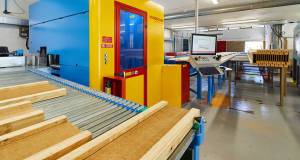 We Build Eco flat pack timber frame partnership gathers pace
We Build Eco flat pack timber frame partnership gathers pace -
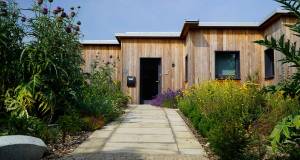 Mass timber masterwork
Mass timber masterwork -
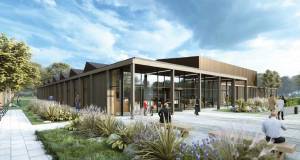 AECB conference to showcase timber innovation
AECB conference to showcase timber innovation -
Disappointment at new building energy standards
-
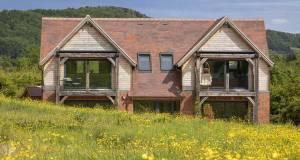 Heart of oak
Heart of oak -
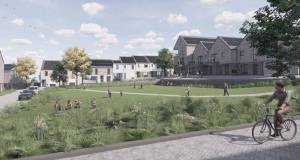 Welsh social housing to embrace passive house, timber & life cycle assessment
Welsh social housing to embrace passive house, timber & life cycle assessment -
 Cambridge chooses passive house comfort for Kings’ College students
Cambridge chooses passive house comfort for Kings’ College students -
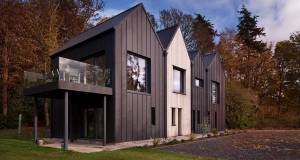 Pitch perfect - Beguiling Dundee passive house puts wood into woodland
Pitch perfect - Beguiling Dundee passive house puts wood into woodland -
 Above the curve - Limerick passive house showcases precision timber engineering
Above the curve - Limerick passive house showcases precision timber engineering

